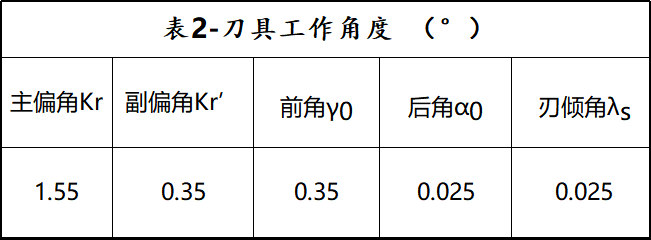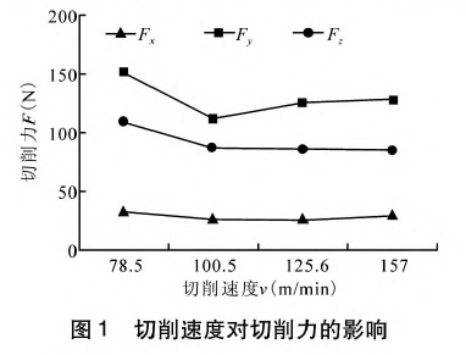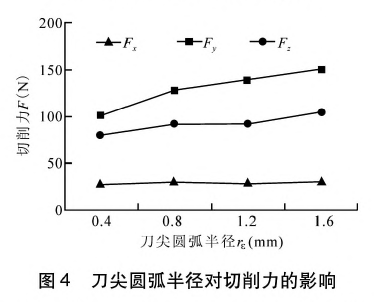
【Foreword to the article】
This article, citing journal articles, introduces the effect of the combination of TiALN coating and PCBN inserts on cutting performance.
The original paper uses a coated PCBN tool to conduct cutting tests on hardened die steel. The orthogonal test with 4 factors and 4 levels was used to study the influence of different cutting amount and radius of tool nose on the cutting force and workpiece surface roughness. influence level.
The research results can provide a new theoretical and experimental basis for the processing of hardened die steel.
1. Hardened steel and its machinability
Hardened die steel (Cr12MoV) has high hardness and wear resistance, and is a widely used cold work die steel that can be used in the manufacture of automobiles, home appliances and medical products.
The hardened die steel has a hardness of up to 60HRC after quenching, has good hardenability and impact resistance, and is widely used in the manufacture of molds and tools with large cross-sections and large impact loads.
Hardened die steel has good performance, but its high hardness and poor thermal conductivity make it a difficult-to-machine material.
Compared with traditional grinding, the cost of processing such workpiece materials by hard turning method can be reduced by about 40%, the efficiency can be increased by 3 to 4 times, and the processing technology is more environmentally friendly.
However, the use of "grinding instead of turning" to process hardened die steel will bring about the problems of high cutting force and high cutting temperature during the cutting process. Therefore, it is necessary to choose cutting tools with better performance to meet the processing requirements.
2. Coated PCBN materials and their performance characteristics
The cutting performance of the coated PCBN tool is good. When using it to process high hardness materials such as hardened die steel, the TiO2 produced by the oxidation of the TiALN coating at high temperature can improve the friction between the tool-worker and the tool-chip.
Note:
The original text here mentions that the AL2O3 produced by the oxidation of TiALN coating at high temperature reduces the friction coefficient, and the author believes that it should be TiO2.
Coated PCBN tool can solve the problem of tool chipping and rapid wear during machining, and is a better tool material for machining hardened steel.
3. Test conditions and programs
1. Specimen material
The test piece is made of hardened die steel with the grade of Cr12MoV, and the size of the test piece is D108mm×300mm. Cr12MoV is an alloy tool steel mainly composed of elements such as chromium, carbon, molybdenum and vanadium. The specific components are shown in Table 1.

In the test, the workpiece was subjected to the following heat treatment: firstly, quenching at 980°C to 1000°C, and then tempering at 200°C twice. After heat treatment, the hardness of the workpiece is 58-60HRC, and its hardness is high, which can meet the requirements of production.
2. Test tool
In the test, a coated PCBN tool with the brand name of BNC2020 from Sumitomo Corporation of Japan was used for the turning test. The coating material was TiALN, the coating thickness was 1.5 μm, and the tool chamfering parameter was 0.15 mm x -20°.

Test plan
The hardened die steel was cut by the orthogonal test method. The factors and levels of the cutting test are shown in Table 3. The cutting force during the test was collected by a turning force measuring instrument developed by Dalian University of Technology, and the surface roughness was measured with a TR200 portable roughness meter.

1. Cutting force test results
Cutting force is an important parameter in the cutting process, which has a great influence on the use of machine tools, tool selection, cutting heat generation and tool life.
The original text studies the cutting force of the hardened die steel cutting with the coated PCBN tool, and explores the influence of different cutting amounts and the radius of the tool nose arc on the cutting force. The results are shown in Figures 1 to 4.

As shown in Figure 1
When the cutting speed increased from 78.5m/min to 100.5m/min, the main cutting force and back force decreased significantly with the increase of cutting speed, and the reduction range reached 30%, which was inconsistent with the traditional cutting theory.
In traditional cutting theory, an increase in speed leads to an increase in the shear angle and a consequent decrease in the cutting force.
However, in the actual cutting process, as the cutting temperature increases, the workpiece material will undergo thermal softening. When the softening effect is not much different from the strain rate strengthening effect of the workpiece material, the cutting speed has little effect on the cutting force.
When using a coated PCBN tool to cut hardened die steel, the heat generated during the cutting process is mainly concentrated in the cutting area due to the low thermal conductivity of the TiALN coating and the effect of "heat insulation" during processing.
In addition, due to the poor thermal conductivity of the workpiece material, as the cutting speed increases, the temperature of the cutting zone also increases rapidly, and the high-temperature thermal softening effect is much greater than the high-strain strengthening effect, resulting in a significant reduction in cutting force with the increase of cutting speed. .
When the cutting speed moves >100.5m/min, the back force during the cutting process tends to increase, while the axial force and main cutting force change little.
At this time, with the further increase of the cutting speed, although the increase of the cutting temperature will cause the thermal softening of the workpiece material to increase and the cutting force will decrease, the increase of the cutting speed will increase the wear of the surface coating and the flank of the tool. , which increases the cutting force.
Under the combined effect of these two factors, the cutting force increases but does not change much.

It can be seen from Figure 2 that
The cutting force does not increase slowly with the change of the feed rate, which is inconsistent with the theoretical results. When the feed rate is 0.05mm/r, the cutting force is larger.
This is because when the feed rate is small, due to the large blunt radius of the edge of the coated PCBN tool (42μm), the tool cuts the workpiece in the form of "extrusion", and the frictional resistance between the tool and the workpiece during the cutting process. larger, resulting in higher cutting forces.
When the feed rate f>0.1mm/r, the change of the cutting force is not proportional to the increase of the feed rate (the ratio is less than 1), which is consistent with the traditional cutting theory.
This is because although the increase of the feed will increase the cutting resistance during the cutting process, the cutting thickness will also increase, which will weaken the increase of the cutting force, which will lead to the inability of the cutting force to change with the feed. proportional.
In the traditional cutting theory, when the cutting depth increases, since the cutting thickness remains unchanged, the cutting width increases proportionally with the cutting depth, and the cutting force should also increase proportionally in theory.
However, the results produced under this experimental condition are inconsistent with traditional theory.
与此原文有关的更多信息要查看其他翻译信息,您必须输入相应原文

It can be seen from Figure 3 that
When turning hardened die steel, when the depth of cut is doubled (from 0.1mm to 0.2mm), the main cutting force is only increased by about 70% (from 80N to 136N). This is because the thermal conductivity of hardened steel is poor, so that the cutting temperature increases with the increase of the cutting depth, and the thermal softening of the workpiece material aggravates the change of cutting force, which is not proportional to the change of cutting depth.

It can be seen from Figure 4 that
The influence law of the radius of the tool nose arc on the cutting force is in line with the theoretical situation. This is because the increase in the radius of the tool nose arc will cause the contact length between the workpiece and the cutting edge of the cutting tool to increase, thereby increasing the cutting resistance and the main cutting force.
As the radius of the tool nose arc increases, the main and minor declination angles of each point on the cutting edge decrease. From the formulas Fy=Fn×cosKr, Fx=Fn×sinKr, it can be seen that the The increase will lead to an increase in the back force and a decrease in the axial force.
It can also be seen from Figures 1 to 4 that the back force is greater than the main cutting force during the test, which is inconsistent with the results of previous cutting processes.
The reasons are as follows: hardened die steel has high hardness, low plasticity, poor processing performance, short contact distance between tool and chip during processing, and the average friction coefficient on the rake face is small, which makes processing The main cutting force is small during the process.
In addition, due to the difficult machining of hardened steel, a coated PCBN tool with a negative chamfer (0.15mm×-25°) was used in the test. The chamfered edge is squeezed, resulting in a large back force.
【Conclusion of the article】
In the original text, from the perspective of cutting force, the cutting performance of the coated PCBN insert is analyzed, but after all, the cutting force is at the microscopic level. In the next article, the author will continue to analyze the surface quality test data, and it is contrary to the classical theory. theoretical explanation.
References: Zhang Peng, "Experimental Research on Cutting Hardened Die Steel with Coated PCBN Tools".